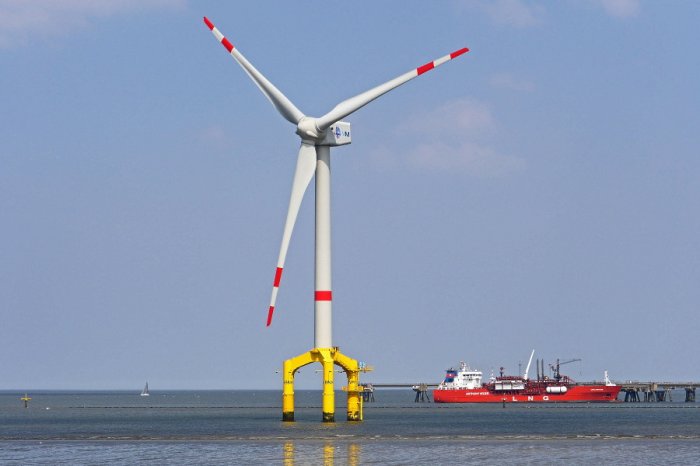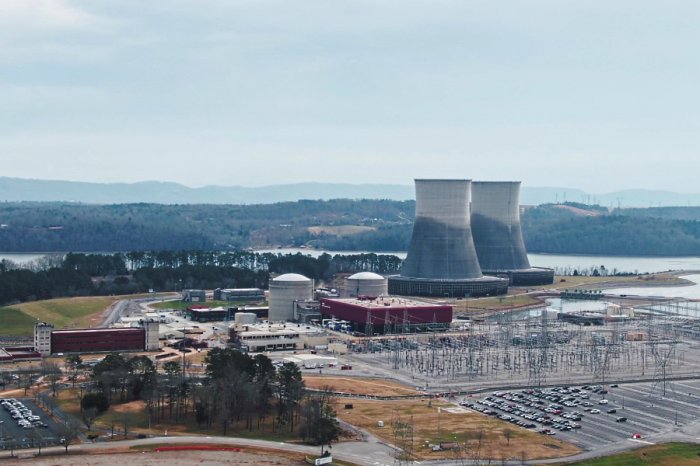After receiving the necessary documents and project presentation, our team will try to review your request as soon as possible, and leading experts will offer the best options for project funding.
Organization of reliable project finance schemes and attraction of large investment loans, including loans issued by private investors, are important tasks for companies planning the construction of a new refinery.
The cost of constructing an oil refinery can vary based on several factors, including the capacity, engineering complexity, location, refining technology used, regulatory requirements, and market conditions. Due to the very large differences in these factors, the ratio of capital costs and productivity of the facility varies over a wide range.
For example, Al-Zour Refinery in Kuwait with a capacity of about 600,000 barrels per day (commissioned in 2023) is considered one of the largest oil refining projects globally.
The construction cost was estimated at around $14 billion.
From the other hand, Pengerang Integrated petrochemical Complex (PIC) with a capacity of about 300,000 bpd was estimated at $27 billion. The Duqm Refinery in Oman had a total cost of approximately $7 billion, with a refining capacity of 230,000 barrels per day and the capability to process various types of crude oil.
In any case, the initiators of such projects feel the need to attract many billions of dollars of funding, including on a long-term basis. These funds can be obtained through traditional investment loans, project finance mechanisms, leasing instruments, financial support from export-import credit agencies, and other options that are used flexibly across the board.
Long-term investment loans
Investment loans are a crucial source of financing for the construction of oil refineries.These loans are typically designed to provide large funds for capital-intensive projects with extended repayment terms that align with the long lifespan of refineries.
Long-term investment loans for the construction of oil refineries have extended repayment periods, often ranging from 10 to 30 years. The extended tenure allows the borrower (refinery developer) to spread out the repayment over the project's operational life, reducing the burden of debt repayment.
Oil refinery construction is highly capital-intensive due to the huge costs associated with land acquisition, engineering, procurement of equipment, construction, and commissioning.
Long-term investment loans are structured to accommodate the massive capital requirements of such projects.
Lenders assess the refinery project's cash flow projections to ensure that it generates sufficient revenue to service the debt over the loan tenure.
These projections are based on refining margins, capacity utilization rates, market demand, and other relevant factors.
Long-term investment loans for oil refineries may be secured by the refinery's assets, land, and other tangible collateral. Additionally, lenders may require guarantees or commitments from the sponsors or other parties involved in the particular project.
Interest rates for long-term investment loans can be fixed or floating, depending on market conditions and the terms negotiated between the borrower and the lender. Fixed rates provide stability in repayment planning, while floating rates may be subject to market fluctuations.
Lenders conduct professional comprehensive due diligence before extending long-term investment loans for refinery construction. They assess the project's technical feasibility, environmental impact, regulatory compliance, and financial viability to manage potential risks.
In some cases, long-term investment loans for oil refineries construction may receive support from governments or development agencies, especially in developing countries.
Such support can include guarantees, preferential interest rates, or risk guarantees to encourage private investment.
Due to the substantial loan amount required for oil refinery construction, lenders might form a syndicate to share the financial risk. Syndication allows multiple financial institutions to participate in the financing of the project. Syndication provides essential funding for the construction of large refineries, enabling these crucial energy infrastructure projects to meet growing demands, enhance energy security, and contribute to economic development.
Besides, refinery projects can be funded through project finance mechanisms, where the loans are secured by the future cash flow of the project itself. This approach significantly reduces the risk for lenders and might make it easier to secure long-term financing. PF is especially attractive for risky, technically complex and capital-intensive projects.
Application of project finance for refinery construction
Project Finance (PF) is a commonly used financial technique in large-scale projects, including the construction of oil refineries.PF involves securing funding for a specific project based on its future cash flow and assets, rather than relying on the creditworthiness of the project sponsors.
Project finance for these facilities involves creating a financial structure that is specifically tailored to the needs and risks of the refinery project. This structure typically includes a combination of debt and equity financing. In PF schemes for refineries, a significant portion of the funding comes from debt. The debt is repaid over the project's life through the revenue generated by the stable operation.
The tenure of debt in oil refinery construction projects can span to 10-15 years, depending on the particular investment project.
Longer tenures allow for spreading the repayment over the time and aligning with the project's cash flow generation.
As mentioned earlier, project finance is typically structured as non-recourse debt. Lenders have limited or no recourse to the project sponsors' assets in case of default. The debt is primarily secured by the cash flow and assets of the refinery. This is often decisive in the choice of financing mechanism and has a huge impact on the distribution of project risks.
One of the critical aspects of project finance is risk allocation. Risks in oil refinery projects can be diverse, including construction delays, cost overruns, market fluctuations, environmental concerns, and regulatory changes. In PF schemes, risks are allocated among the project parties, such as lenders, sponsors, and contractors, based on their ability to manage and control them.
Lenders in oil refinery project finance may require completion guarantees from the project sponsors or contractors. Completion guarantees ensure that the project will be completed as planned, even if unforeseen circumstances arise during the construction phase.
To provide additional security to lenders, refinery projects often enter into off-take agreements with buyers for the refined products.
These agreements ensure a reliable revenue stream, as the buyers commit to purchase specific quantities of the refinery's output at agreed-upon prices.
Successful project finance schemes in the construction of oil refineries requires a robust technical and economic feasibility study. The study should demonstrate the refinery's viability, including the refining margins, feedstock availability, market demand, and competitive advantage.

Financing options for oil refinery projects
Financing the construction of an oil refinery is a capital-intensive undertaking due to the high costs and complexity involved in such investment projects.Generally, there are several options available for obtaining loans or financing for refinery construction.
Commercial banks
Most commercial banks offer investment loans or lines of credit for large-scale industrial projects like oil refinery construction. However, they often have stringent requirements, and you'll need a solid business plan, liquid collateral, and a good credit history to qualify. Interest rates, loan terms, and eligibility criteria vary among different financial institutions and regions.Development banks
Some countries closely cooperate with development banks, large financial institutions that specialize in funding major infrastructure projects. These banks may be more willing to take on long-term and higher-risk projects like oil refinery construction. They might offer more favorable terms and longer repayment periods compared to commercial banks. Examples include the Asian Development Bank (ADB), the African Development Bank (AfDB), and the Inter-American Development Bank (IDB).Export Credit Agencies
ECAs usually provide large loans, guarantees, and insurance to support exports and international investments. If the refinery equipment or technology is being sourced from a particular country, its ECA might offer flexible and affordable financing options. The terms and conditions vary depending on the ECA and the country of origin of the equipment or technology.Private equity and venture capital
Large private equity firms or venture institutions might invest in oil refinery projects if they see potential for significant returns. This option might require giving up some ownership stake in the investment project. Funding from private equity can be much more flexible but may come with higher expectations for overall project success.Multilateral financial institutions
International organizations such as the World Bank or regional development banks may provide financial support for infrastructure projects in certain regions or developing countries. They offer long-term investment loans, grants, and technical assistance to support economic growth.Public-Private Partnerships (PPP)
Governments sometimes partner with private companies to develop large oil projects, including refineries. In this case, funding could come from both private and public sources. Governments usually provide some funding and regulatory support, while private investors contribute capital and expertise. The risk and reward are shared between the public and private entities.It's essential to have a well-structured and comprehensive feasibility study and business plan before seeking financing for any oil refinery project. Additionally, the project's success and attractiveness to lenders will depend on factors such as market demand, regulatory environment, technology selection, environmental impact assessments, and project management capabilities.
Commercial banks in oil refinery financing
Large commercial banks play a crucial role in financing capital-intensive industrial projects, including oil refinery construction.They offer various financial products, such as project loans, lines of credit, and financial advisory services, to support infrastructure ventures. Several well-known commercial banks have been involved in financing oil refinery projects worldwide.
Some prominent ones include the following:
• Citigroup Inc.
• Bank of America Corporation
• JPMorgan Chase & Co.
• HSBC Holdings PLC
• Standard Chartered PLC
• BNP Paribas S.A.
• Barclays PLC
• Deutsche Bank AG
These banks have extensive experience in infrastructure project financing and have been involved in funding various infrastructure projects globally.
Commercial banks assess the feasibility, risks, and potential profitability of the refinery project before providing financing. They consider factors such as the facility location, current and future market demand, technology, environmental impact, and the borrower's creditworthiness.
The terms and conditions of investment loans vary greatly between banks, projects, and regions. Interest rates may be fixed or variable, depending on current market conditions and the borrower's preference. Loan repayment tenures can span several years to several decades, depending on the complexity and projected lifespan of the particular refinery.
For large-scale oil refinery projects that require substantial funding, commercial banks often form syndicates to share the financial risk.
A syndicate is a group of lenders who collectively provide the necessary financing.
This approach allows banks to diversify their exposure and share the responsibility for project success.
One notable example of a syndicate loan for oil refinery financing is the Jamnagar Refinery in India. The refinery is operated by Reliance Industries and is one of the largest in the world. In the early 2000s, when the refinery was being modernized, a syndicate of banks came together to provide a loan to support the project, including several major international financial institutions.
Another example is the Fujairah Oil Terminal in the United Arab Emirates. This project involved the construction of large oil storage and export facility in the strategic port of Fujairah. A syndicate of banks participated in providing the financing for this project, enabling its completion.
Commercial banks usually require collateral to secure the loan. Collateral may include the refinery's assets, land, equipment, or other valuable assets. In some cases, government guarantees or letters of credit might be necessary to reduce the risk for lenders. Before approving financing, banks conduct thorough due diligence, which involves assessing the project's financial viability, technical feasibility, regulatory compliance, and potential risks.
It's important to note that the specific involvement of individual banks and the terms they offer vary widely based on factors such as the location of the project, the size of the financing required, political risks, prevailing economic conditions, and the bank's own risk appetite.

Private equity and venture capital
Private equity and venture capital firms have been increasingly active in the energy sector, including investing in oil refineries construction and related projects.Private investors can take various approaches in refinery projects, including direct investment in existing plants, financing expansion or upgrade projects, and supporting the development of new facilities.
According to Preqin, a leading data provider in the alternative assets industry, private equity and venture capital firms invested over $50 billion in the energy sector in 2020. While not all of this investment went into oil refineries, it reflects the significant interest in the sector.
Some of the well-known private equity firms with investments in the energy sector, including oil refineries, include the Carlyle Group, KKR & Co., Blackstone Group Inc., Warburg Pincus LLC, Apollo Global Management LLC and other famous brands.
In some cases, private investors acquire existing refineries to enhance operational efficiency and profitability. They might invest in modernizing the facilities or improving operational processes to increase output and reduce costs. Venture capital firms might invest in technology and innovation related to the industry, such as digitalization, energy efficiency, and alternative fuel technologies.
Oil refinery projects can be capital-intensive and involve strong long-term commitments.
Private equity and venture capital firms evaluate these projects based on potential returns, risk factors, and the overall economic outlook.
They often seek new business opportunities in emerging markets where there is a need for infrastructure development, including refining capacity.
It's important to note that while private equity and venture firms can bring significant funds and expertise to oil refinery projects, they also operate with a focus on maximizing returns for their investors. The involvement of private investors in oil refinery construction can vary significantly depending on the specific project, market conditions, and the investment strategies.
Export credit agencies in financing oil refineries
Export Credit Agencies (ECAs) also play a crucial role in financing refinery construction projects worldwide, especially when equipment, technology, or services are sourced from their respective countries.ECAs provide financial and risk-mitigation support to exporters, allowing them to offer competitive financing terms to buyers and investors in international projects.
ECAs also offer guarantees and insurance to cover various political and commercial risks associated with cross-border transactions. This helps reduce the perceived risk for lenders and investors, making financing more accessible and affordable.
According to the Berne Union, an association of export credit and investment insurance providers, ECAs globally supported $2.3 trillion of exports and investments in 2019 (the last pre-pandemic year), spanning various industries, including energy and infrastructure projects like oil refineries.
Some of the prominent export credit agencies from different countries that have been involved in financing large infrastructure projects at a global level include:
• Export-Import Bank of the United States (EXIM Bank)
• Export Development Canada (EDC)
• China Export & Credit Insurance Corporation (Sinosure)
• Korea Trade Insurance Corporation (K-SURE)
• Japan Bank for International Cooperation (JBIC)
• Euler Hermes (Germany)
• UK Export Finance (UKEF)
• COFACE (France)
In many cases, ECAs have supported the financing of the largest refinery projects worldwide.
In 2019, the UKEF provided $1.7 billion to the Duqm Refinery project in Oman. This mega-project involved the construction of a new refinery in partnership with a South Korean consortium.
However, financial criteria may not be decisive for this type of institution. Some agencies have introduced sustainability criteria for financing projects. These criteria might include environmental and social impact assessments to ensure adherence to responsible and sustainable practices. In certain cases, ECAs may require or encourage the inclusion of local content in refinery projects to promote economic development and capacity-building in the host country.
ECAs often collaborate with large commercial banks to provide long-term financing packages for oil refinery construction. This collaboration can lead to larger and more comprehensive solutions.
PPP in financing the construction of refineries
Public-private partnerships have been successfully utilized in large infrastructure projects, including oil refineries construction.PPPs involve collaboration between public sector entities (governments, state-owned enterprises) and private companies to jointly finance, develop, and operate refineries.
In PPPs, the government or public entity typically provides land, permits, and regulatory support, while the private partner contributes capital, technical expertise, and operational know-how. In some PPP agreements, special provisions may be included to ensure that local communities benefit from the project through job creation, training programs, and social initiatives.
Advantages of PPPs in refinery construction include a positive impact on the operational efficiency of the project and rational distribution of risks. PPPs allow risks to be distributed between public and private partners, which can make large-scale projects more feasible and attractive to private investors.
The private sector's expertise can lead to more efficient project management, construction, and operation of the refinery.
Prominent PPP examples include Jamnagar Refinery (India) which is one of the world largest oil refineries that was developed as a public-private partnership between Reliance Industries Limited and the Gujarat State Government. Another successful example of recent years is the STAR Refinery in Turkey that was developed as a PPP between SOCAR Turkey and the Ministry of Treasury and Finance of Turkey as a government partner.
The success of PPPs in refinery projects depends on several factors, including professional project planning, a clear allocation of risks, and well-defined contract agreements between the public and private partners. PPP frameworks vary between countries, and the design of each PPP for a refinery project needs to consider the specific legal, regulatory, and economic conditions of the host country.
It's essential to recognize that PPPs are complex arrangements that require thorough preparation, transparent governance, and long-term commitment from both public and private partners.
While PPPs offer several advantages, they also present challenges related to project complexity, political considerations, and ensuring a fair allocation of risks and rewards.
The role of development banks
Development banks play a vital role in financing oil refinery construction projects, particularly in developing countries.These huge institutions are specialized financial organizations established by governments or international bodies with the primary objective of promoting economic development and supporting infrastructure projects that contribute to sustainable growth.

Regional development banks, such as the Asian Development Bank (ADB), the African Development Bank (AfDB), and the Inter-American Development Bank (IDB), are prominent examples. These institutions focus on financing projects within specific geographic regions and have supported numerous energy and infrastructure initiatives, including oil refineries.
Multilateral institutions like the World Bank provide financial and technical support to countries across the world. They support projects in various sectors, including energy, and collaborate with governments and other stakeholders to address development challenges.
Below are some key points about development banks involvement in refinery construction.
1. Funding support
Development banks provide long-term loans, grants, equity investments, and technical assistance to support the development of oil refineries. They focus on projects that align with their development goals, such as improving energy security, increasing access to affordable energy, and promoting industrial growth of host countries and entire regions of the world.2. Risk mitigation
Development banks often act as a counterparty for projects that face higher risks, such as large-scale infrastructure ventures with uncertain revenue streams. By providing financial support and risk mitigation instruments, they encourage private and public investments in investment projects that might not be entirely feasible through conventional financing mechanisms.3. Technical expertise
In addition to financial support, development banks offer technical expertise and advisory services to help ensure the successful execution of oil refinery projects. They assist with project planning, feasibility studies, environmental assessments, and other critical aspects.4. Environmental considerations
Development banks often emphasize sustainability and environmental considerations in their financing decisions. They encourage projects to meet certain environmental and social standards, ensuring that oil refinery construction aligns with best practices for reducing harmful impact.5. Facilitating partnership
Development banks also play a role in facilitating public-private partnerships for oil projects. By bringing together public sector support and private sector expertise, PPPs can help accelerate the development of critical infrastructure.The specific involvement of development banks in oil refinery construction may vary depending on the project's location, the bank's focus areas, and the country's development priorities. Additionally, each bank has its own procedures and criteria for project financing.
If you are interested in long-term financing for the construction, expansion or modernization of refineries in Europe and beyond, please contact our team for advice.
GCAM Investment Group provides comprehensive support for large projects in the oil and gas sector, including assistance in obtaining large loans from private investors and organizing project finance schemes.























